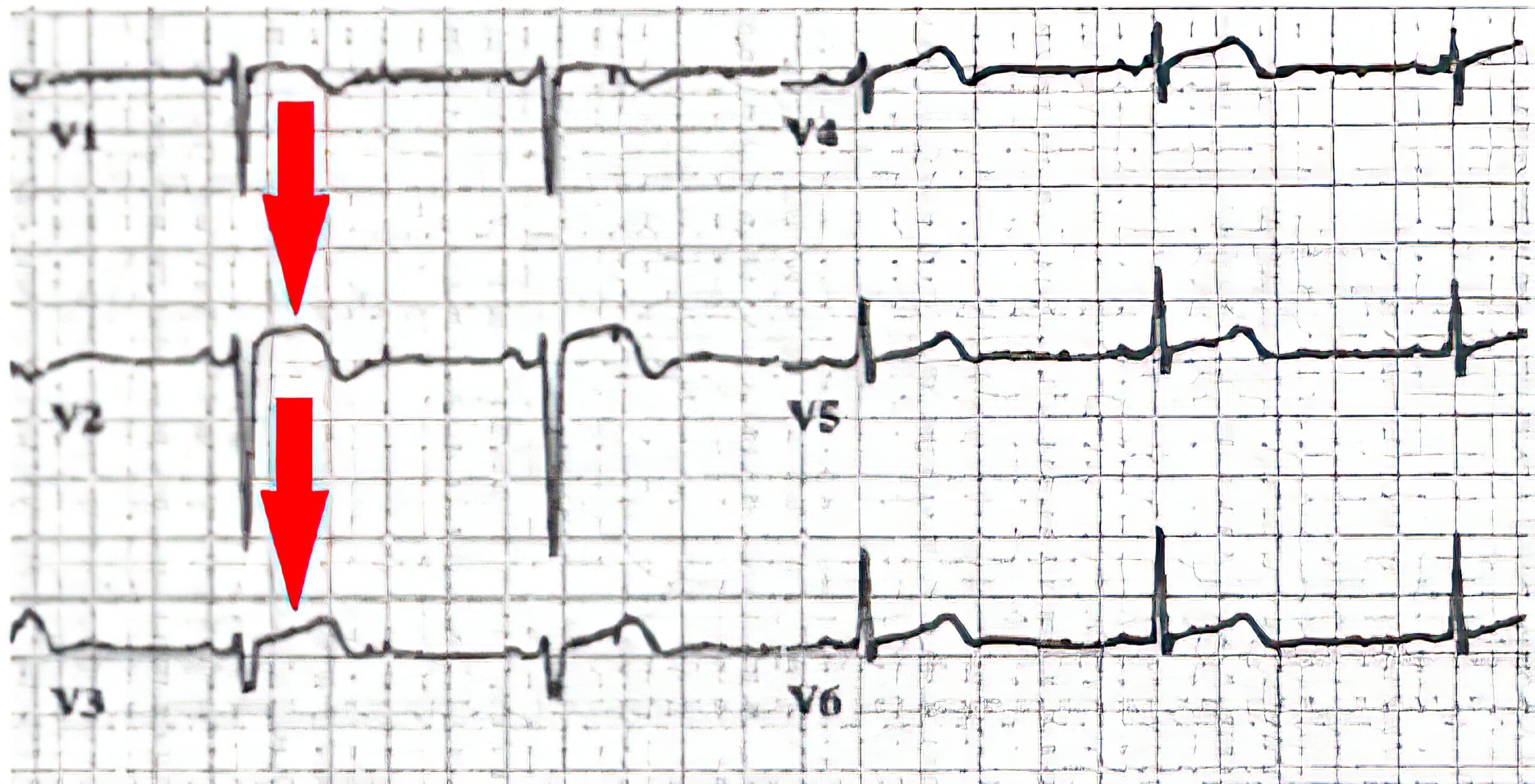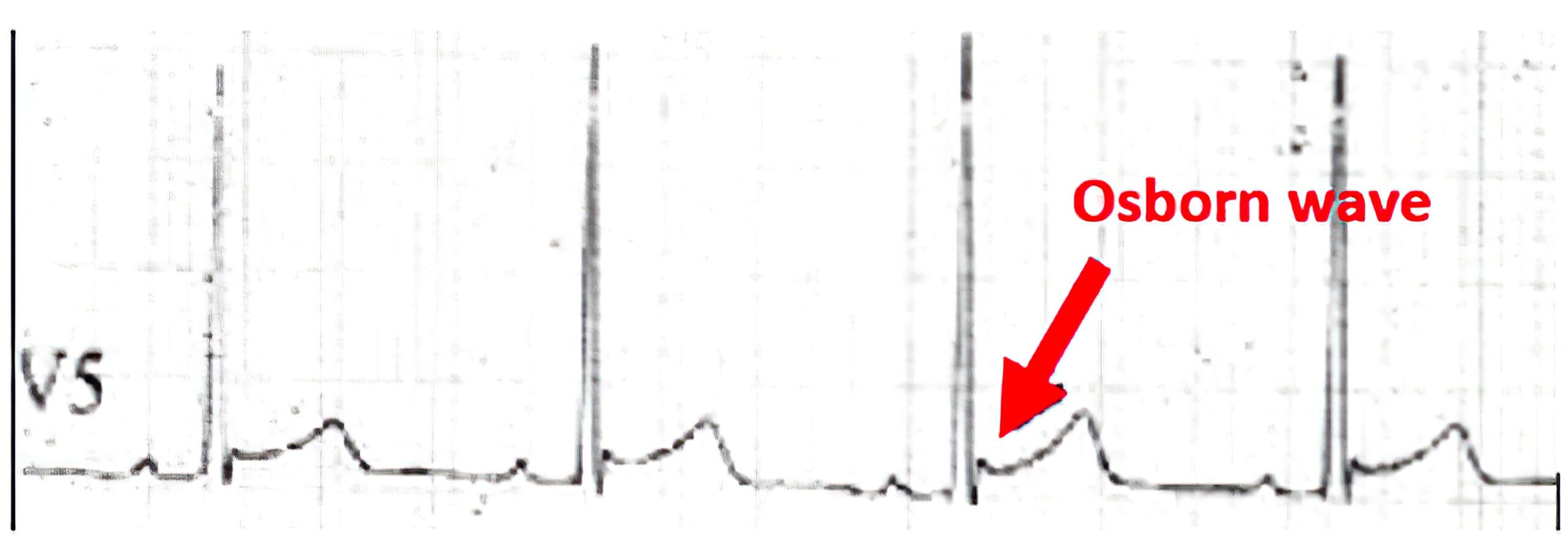The ST Segment
ST elevation in V1 and V3
In the normal ECG, leads V2 and V3 often have a junction point (J point) 0.5 to 1.5 mm above the isoelectric line. The J point in leads V2 and V3 occurs in about 70% of the population. This higher J point mimics ST elevation.
This normal variant is more pronounced in sinus bradycardia, where the normal J point causes a 2–3 mm ST-segment elevation, and on rare occasions, even up to 4 mm. The ST segment elevation, in this example, is measured at 0.08 seconds after the J point.

Sinus Bradycardia With Nonpathologic ST Elevation
Vagal stimulation is another cause of normal ST-segment elevation. Stimulation of the vagus nerve produces a discordance of repolarization in leads V1 through V4 (the anteroseptal leads). This causes a proximity effect which magnifies an ST-segment elevation in the anteroseptal leads.
The proximity effect essentially means the center-point of cardiac impulses drew closer to the anteroseptal leads V1, V2, V3, and V4. This is a common pattern of repolarization and must not be misinterpreted secondary to ischemia.
Rare Pattern of ST-Segment Elevation from Early Repolarization
A rare pattern of ST segment elevation is seen in early repolarization that causes a constant increase in the J point and an ST segment elevation of 2–4 mm that comes directly from the downstroke of the R wave in leads V1 and V2 (anterior leads) and leads III and aVF (inferior leads).
Early repolarization is more common in males than females. It has the same morphology as ST elevation seen in myocardial infarction or Prinzmetal angina. Hypercalcemia can produce a slight ST elevation. Patients with pericarditis or systolic left ventricular overload can also have ST elevation coming from the S wave.
The pathologic condition can be delineated from the normal variant based on the patient’s history and other clinical findings.
The Osborn Wave
The Osborn wave is a short positive deflection seen immediately at the end of the QRS complex, just before the beginning of the ST segment. The normal variant of the Osborn wave is seen in leads V3 through V6, and this is a completely harmless variation.
This wave is also common in hypothermic patients, such as is often the case when a patient is undergoing open-heart surgery. It also occurs in 30–40% of patients with acute pericarditis. In the case of pericarditis, the Osborn wave is also called a stork-leg sign.

The Osborn Wave
Perils and Pitfalls
An ECG interpreter must not assume that an ST-segment elevation of 2 mm or more is always suggestive of acute myocardial ischemia. They must keep in mind that there is a very common normal ECG pattern with ST-segment elevation, as well as a second relatively rare normal variant that could be present and is also not suggestive of acute MI.